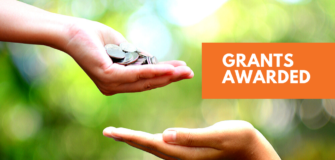eSafety research found most teens are seeing harmful content online
Share

Six in ten teenagers have seen harmful content online – but most parents are unaware of what graphic content their children are exposed to on their screens, including drug taking, suicide and violent sexual material.
On Safer Internet Day, Australia’s eSafety Commissioner Julie Inman Grant has released research exploring the online risks for children which identified significant gaps in parental awareness of children’s exposure to online harm.
More than 3500 people aged eight to 17, and their parents, were surveyed during August and September last year about children’s online lives and what parents know – and don’t know – about their children’s experiences.
It also examined digital parenting practices and the effects on children’s internet use and found parents underestimated the prevalence of children’s negative online experiences.
“I think that the worst thing here is that children are seeing sexual and violent sexual material and gory images,” Grant told ABC TV on Tuesday.
“They’re coming across content about unhealthy eating and suicidal ideation and self-harm and they’re not talking to their parents about it as much because it is stigmatising and no child wants to get in trouble and have the Internet taken away.”
By the age of four, 94 per cent of Australian children have access to a digital device and parents must be fully engaged with their children’s online lives from then, Grant said.
Digital parenting needs to evolve as children grow older.
The eSafety research found:
- Six out of teens have been exposed to harmful content such as drug-taking, suicide, self-harm and unhealthy eating, gory images and violent sexual material but only four out of 10 parents are aware.
- Parents have limited awareness about their children’s experiences with cyberbullying. Nearly 70 per cent of the kids who were treated in a hurtful or nasty way online told their parents but only 51 per cent of parents say they were aware.
- Parents have a better awareness of other harms such as their child’s experiences of being asked to share sexual images of themselves (11 per cent of teens have experienced this while 10 per cent of parents are aware).
Almost all children surveyed took action in response to a negative online experience.
“Encouragingly, children are more knowledgeable and empowered to utilise online tools to block people, delete messages, change their privacy settings or report material to a website or social media platform,” Grant said.
eSafety has a range of downloadable education resources, including a family tech agreement for five- to eight-year-olds.
Lourdes Antenor is an experienced writer who specialises in the not-for-profit sector and its affiliations. She is the content producer for Third Sector News, an online knowledge-based platform for and about the Australian NFP sector.

















